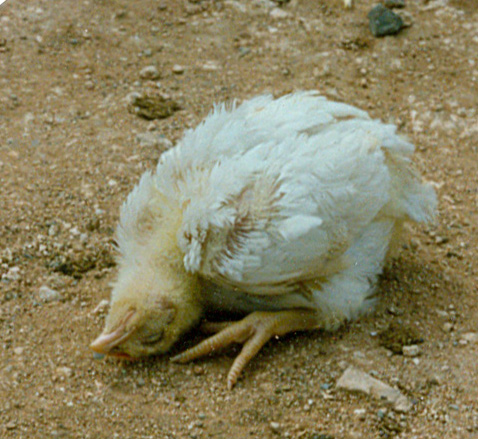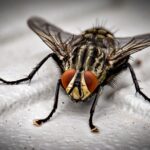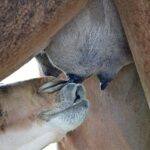Chicken lice is tiny and straw-colored. They live on birds eating dead skin and feather shafts. They also feed on blood if the skin is punctured. They are the most common type of parasites found in coops. Most of them are host-specific and hence can be found feeding on one or more related species.

Nevertheless, it is easy to find if your chicken is invested with lice because they can mainly be found around the vent and underwings. It is easy to identify extensive infestation since chickens are uncomfortable. Be sure to watch for bald birds with rough feathers.
Assessing your chicken for lice
By looking closely at the feathers, you can easily see lice moving about. You might also identify lice eggs at the base of feathers. These look like white fuzz at the base of feather shafts. If one bird is infested, it is more likely the others are, too.
How poultry lice affect chicken
Lice flies and other pests, lice affect chicken health-wise and can lead to deteriorated meat and egg production. They reduce weight or cause stunted growth. The chicken body louse, Menacanthus stramineus is the most common type of poultry lice and is common in commercial and non-commercial settings.
You can also find other types – grey head louse Cuclotogaster heterographus, yellow fluff louse Goniocotes gallina, reddish-brown louse, Goniodes dissimilis, wing louse Lipeurus capons, and shaft louse Menopon gallinae common in the free-range flock.
While some wild lice can infest pathogens, lice are not common to causing other diseases that can affect the poultry.
Nevertheless, if untreated, they can cause anemia, lameness, or even death.
Treatment for poultry lice
- Use food-grade diatomaceous earth (DE) – This chemical is dusted on the body of the chicken. Ensure it reaches the feathers base under the wings to kill the eggs and lice. You should ensure the birds do not inhale the DE. Hence never dust the face or head. You too should use a face mask and eye protection.
Repeat the dusting thrice a week to kill newly hatching lice.
- Use cooled firewood ash stove wood ash – Dust the chickens just in a similar manner to the DE. This is the best form of treating lice although you can apply it on the head too. Dust twice a week for 2 to 3 weeks.
2. Insecticide – You can purchase many lice treatments or pests treatments that can kill poultry lice effectively by dusting or spraying the coop, but be sure to prevent poisoning the chicken feed or eggs in case birds feed on the eggs.
All treatments should be applied repeatedly because, for instance, eggs are resistant to pesticides.
Finally, control of lice is important especially if you are on a free-range farming arrangement. Lice can be brought in from bird interactions with other birds and animals, or within themselves. They can also be brought in through infested equipment including crates or egg flats.
Visit https://kienyejichicken.com/ for Our Improved Kienyeji Chicken Farming Manuals

